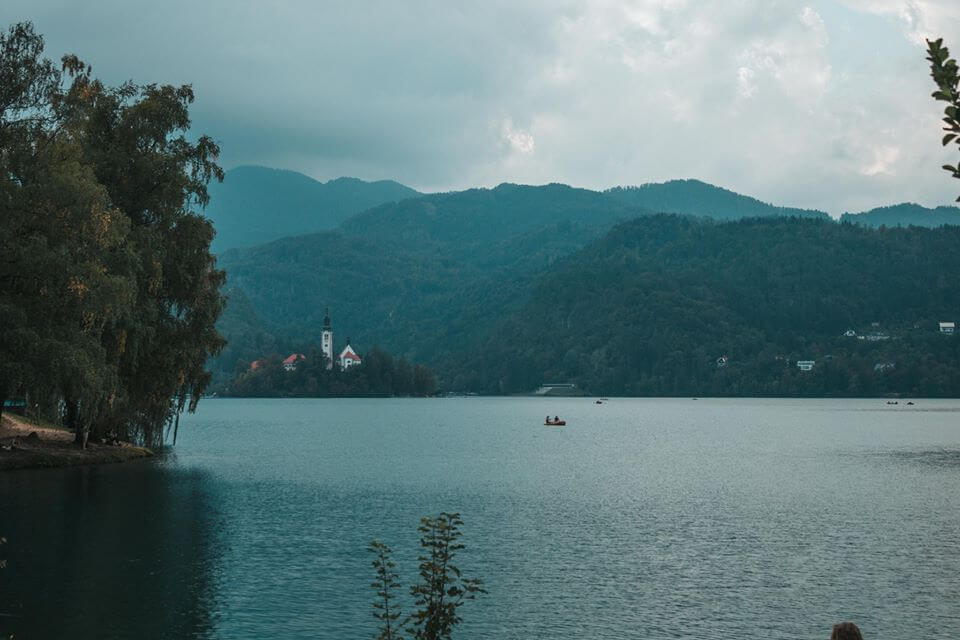By Lianne Oonwalla, an Indian student in Germany.
Slovenia – a jewel in the crown of Central Europe. From natural thermal springs to magnificent karst caves, the country has a wealth of experiences to offer its visitors. Snow-capped peaks, lush forests and crystal clear waters await the eager traveller. It is literally and figuratively the greenest place on the planet, since its capital city Ljubljana received the award for European Commission’s Green Capital of Europe in 2016.
When you visit a new city, your excited itinerary most likely reflects attractions above-ground. Slovenia has a lot to offer in regards to both natural and man-made sights. From grand castles to splendid lakes, delicious cuisine and leafy parks to urban stone architecture; Slovenia has something to satisfy every traveller’s cravings. It portrays an effortless fusion of nature and architecture, quite literally in the case of the Predjama Castle, a castle carved into the stone walls of the mountain. In Slovenia, each element lives in perfect harmony with the others and this divine balance exists underground as well. Let’s embark on an explorative journey of the Postojna Caves, a prime example of Mother Nature’s perfect balance.
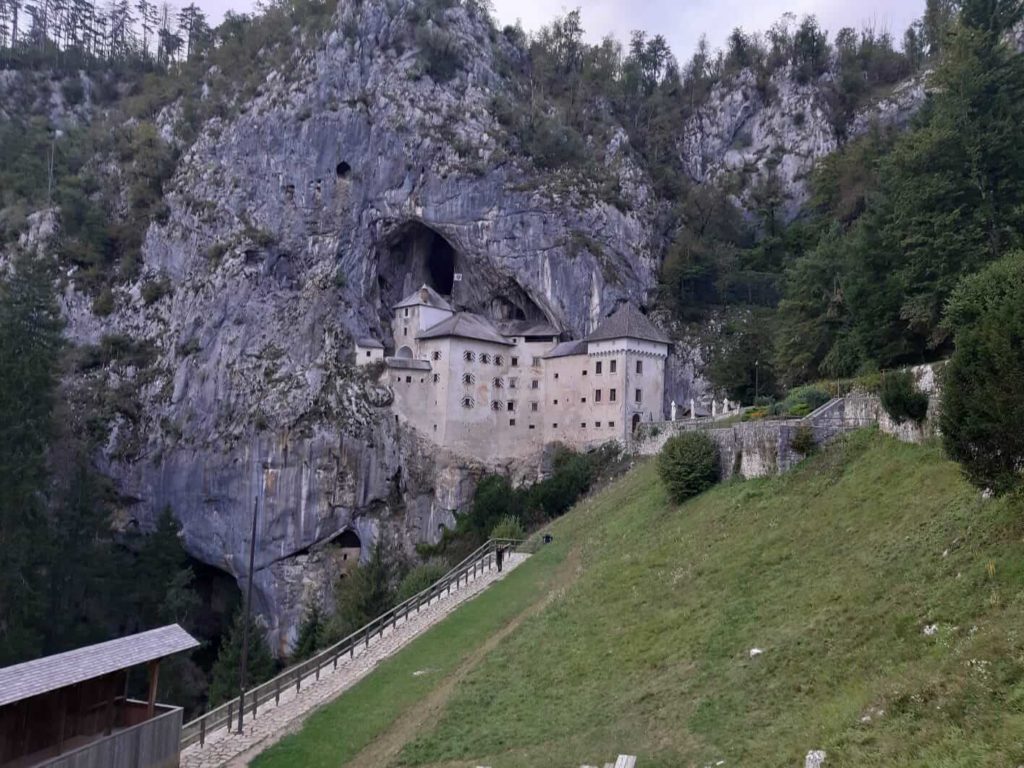
A Brief History
The Postojna caves were first discovered in the 17th century and remain the second-longest cave system in the country. Tours have been conducted in the caves since the mid-1800s, and have been visited by several noble families and European royals. It was officially open to the public in 1819. Electric lighting was installed as early as 1883, almost 15 years before the capital city Ljubljana had electricity! The cave system is 24 km long, connecting four different caves through a river-cut underground route, but visitors are only allowed guided tours of about 5 km of the total area. Approximately three-quarters of the tour are covered by an electric train.
The first documented use of the train in the Postojna Caves was in 1857, in the form of sedan chairs pulled by guides for the royal couple Franz Joseph and his wife Elizabeth, who visited the caves that year, as stated on the official Cave Park website. It was then opened to the public in 1872 and gas locomotives were deployed to carry tourists on the trail, an event recorded as the “world’s first railway in an underground cave”. More history on the first locomotives used in the caves are available on the website too. Visitors today still use the trains to navigate the caves, though the switch to electric carriages was made in the 20th century.
The history of the caves was also explained in detail during our tour. We learnt that in 1916, Russian prisoners of war were forced to build a bridge over a wide chasm. The bridge was thus named “the Russian Bridge” and is part of the modern tour. The tour guide also explained that during World War II, parts of the cave were used by the German army to store several barrels of aircraft fuel, which were destroyed in 1944 by Slovenia’s anti-Nazi Liberation Army. The consequent explosion set parts of the cave on fire and scorched the cave walls near the exit; the blackened burn stains are still visible along the walls.
The Tour
Popular travel magazine Lonely Planet describes the Postojna Caves as “subterranean magic”. Carved by the Pivka River over millions of years, these karst caves are truly an intimidating sight. Karst caves are formed by the gradual dissipation of limestone, dolomite and gypsum that takes place over several millennia. Stalagmites and stalactites of all sizes, from dull to blazing white can be seen in the caves. Notable of them all is Brilliant, a stalagmite 5 meters tall that has become a symbol of the Postojna Caves.
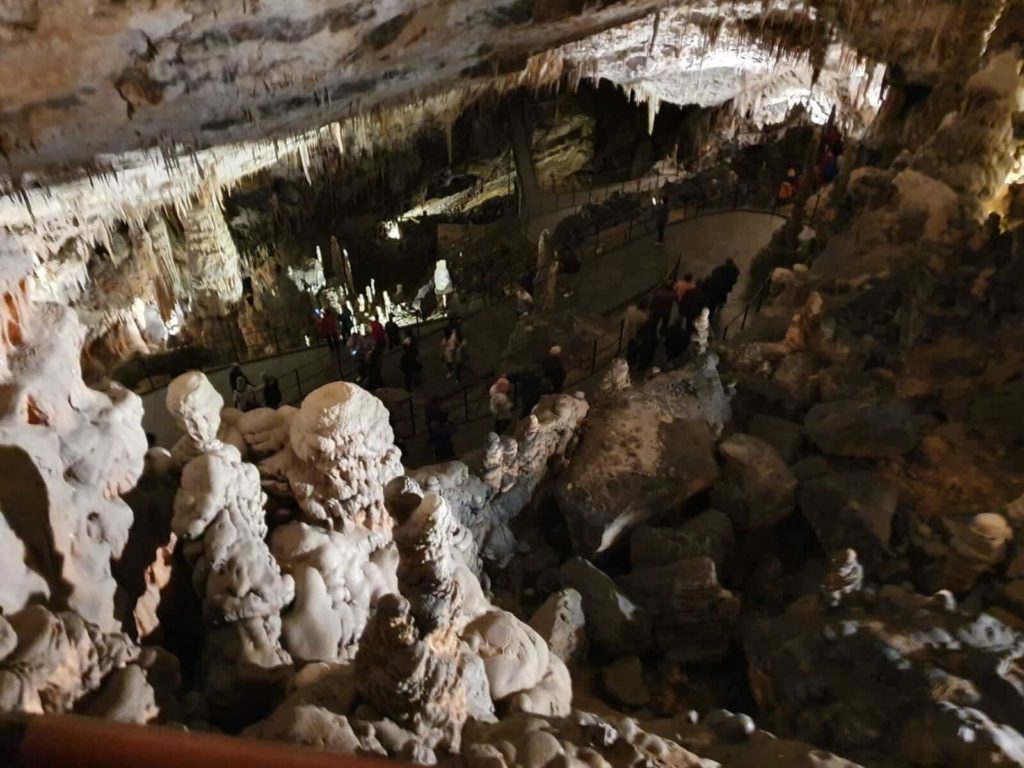
The hour-and-a-half tour takes you through the most spectacular parts of the cave – the Great Mountain Cavern, through halls filled with glistening stalagmites and stalactites, some that have even fused together over time. One cavern in particular was described by the tour guide as the spaghetti cave, due to the million tiny stalactites dangling from the ceiling that resemble the pasta despite their harder exteriors. Tall limestone pillars, twisting and curving and forming beautiful patterns draw the visitor’s eye around every corner. The guide explained how long it takes for the structures to form – around 30 years for about 1 millimeter of stalactite! – and the mind boggled as you try counted back to how many years of natural labour it took to create such breath-taking structures! The tour continued onward across the Russian Bridge and culminated at the great Concert Hall, where there are sometimes live performances and special shows, due to the unique setting an appealing acoustics of the cave walls.
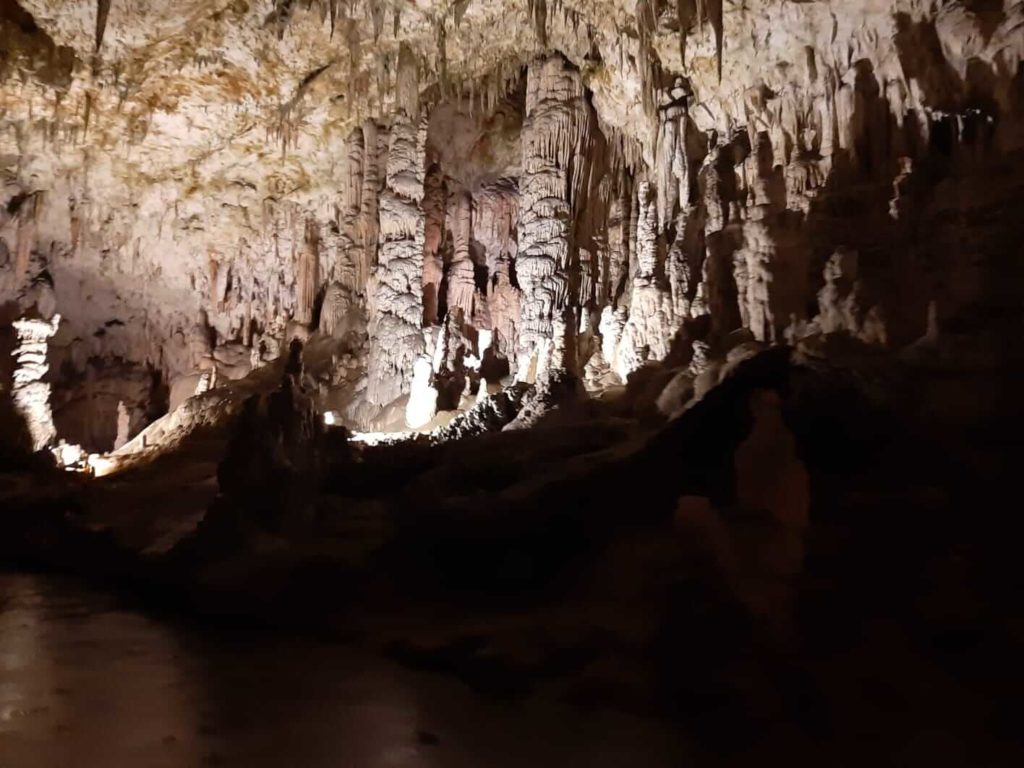
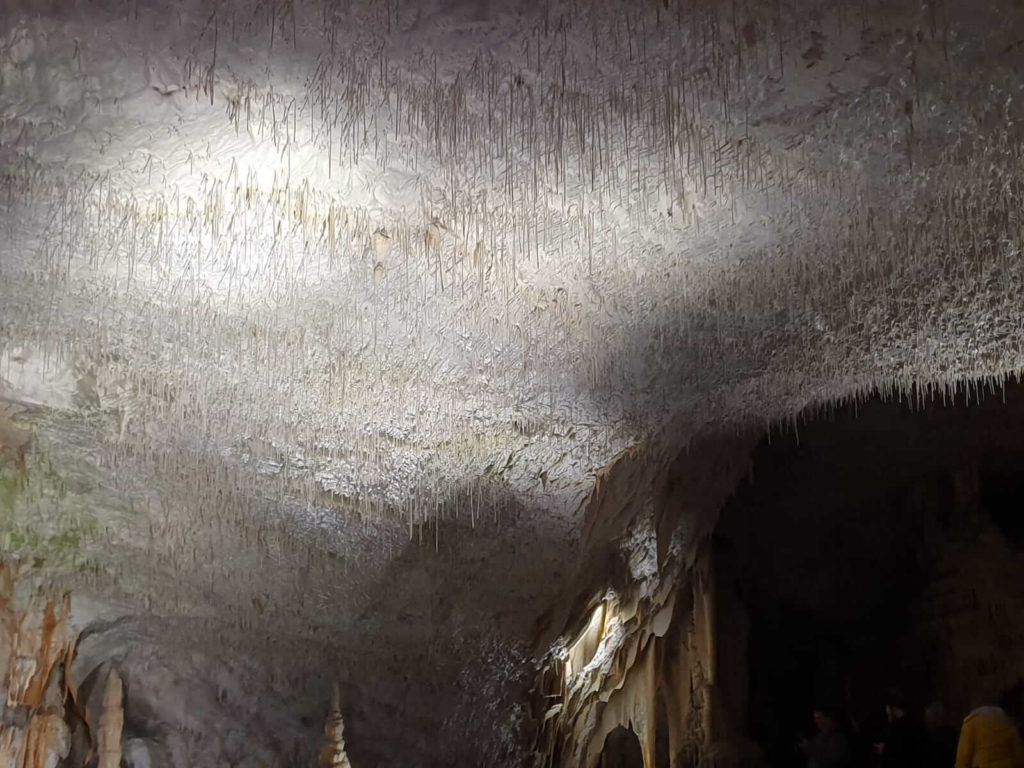
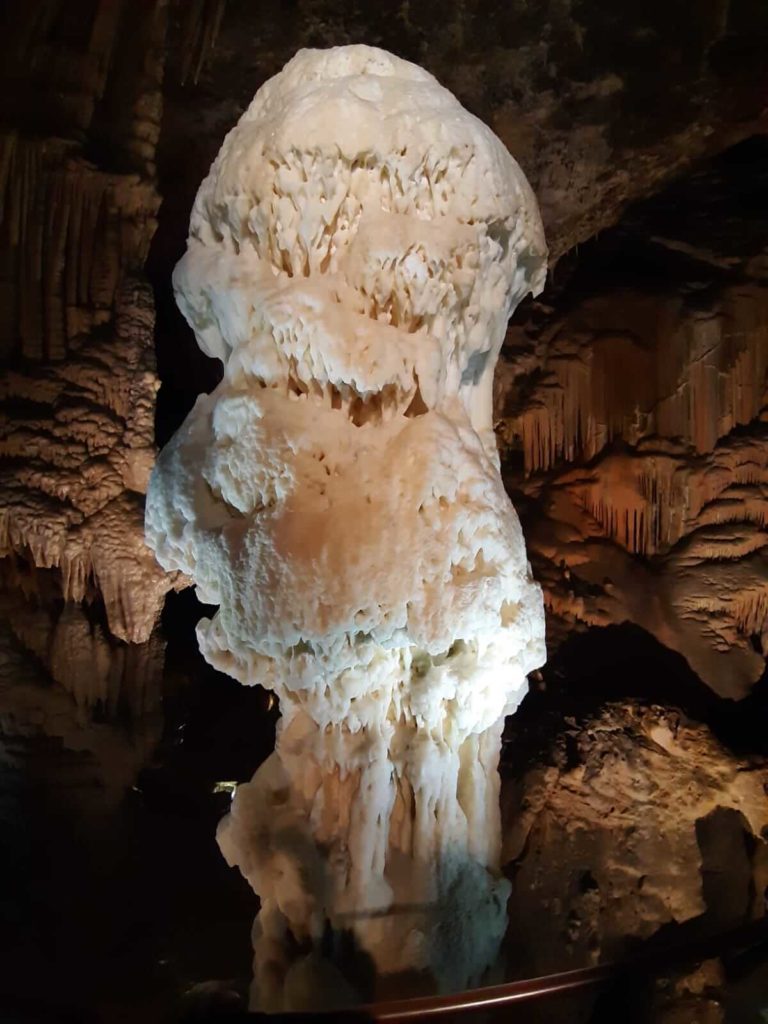
Now hold on, dear reader…just as you thought these caves couldn’t get any cooler – they are also home to the Olm, often described as “baby dragons” owing to their slightly translucent skin, reddish tufts of skin and long, spiney tails. The tiny creatures were even mentioned by Charles Darwin in his book On the Origin of Species (1859). The unique environment provided by the Postojna Caves make it one of the only places on Earth habitable by these creatures. They can live up to a 100 years and only need to eat once every 12 years! We saw one of these beautiful Olm at the end of the tour, but only through the murky waters of its large holding tank. If you ever visit, remember to be very mindful – a sighting of the resident Olm, even in its dark tank, is rare, keep in mind that this is its natural habitat and any bright lights or flashes can scare it into hiding!
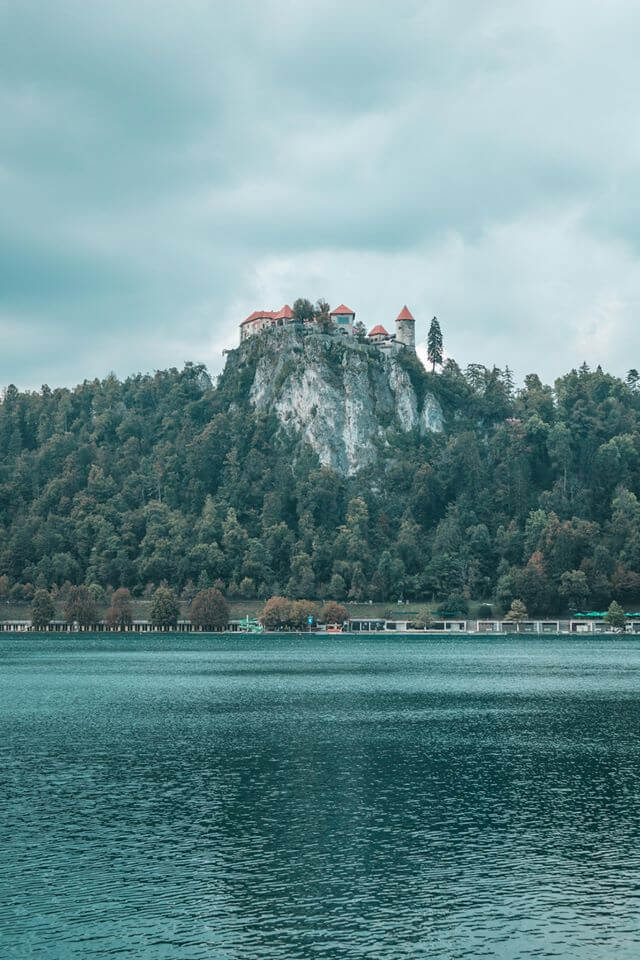
The entire experience at the Postojna Caves felt surreal. Your mind finds it hard to grasp the beauty and the staggering age of these wonderful structures, and you find yourself marvelling at Mother Nature. She truly provides some amazing things for us to experience, and we need to work harder to preserve them. “Subterranean magic” is a truly perfect description for the magnificent Postojna Caves. Who knows what other secrets are hidden in the unexplored regions of its vast expanse? Well, only time will tell.
XXXXXXXXXXXXXXXXX
